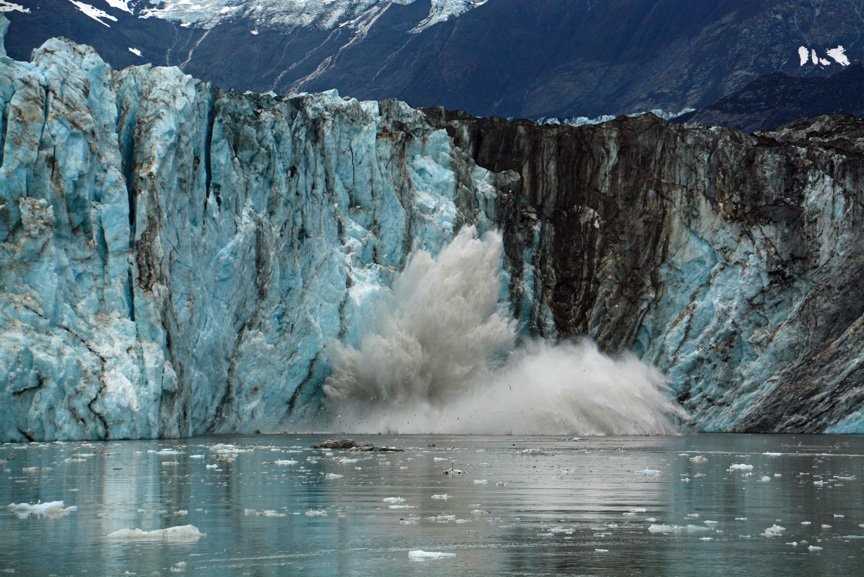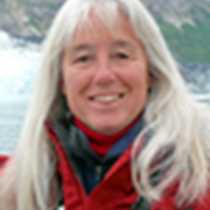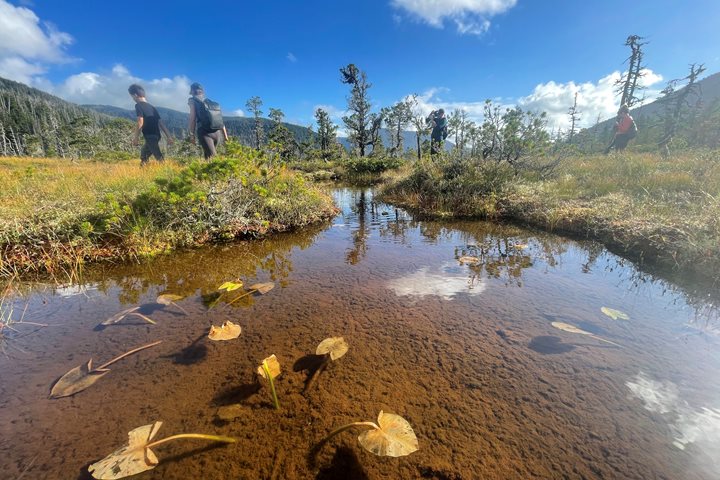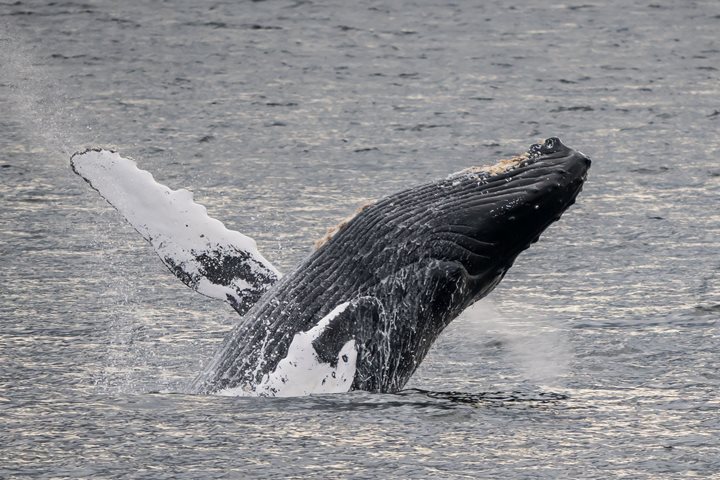When George Vancouver sailed through the northern part of the Inside Passage in 1794, he encountered an embayment full of icebergs and a wall of ice. Glacier Bay as we know it today did not exist. Now we are able to motor sixty five miles to find what remains of the glaciers that once filled the bay. It has been a remarkable and dramatic retreat of ice in historic times, creating a natural laboratory to study tidewater glaciers, plant and animal succession, and geology. Human history is also part of the story.
Last evening, National Geographic Sea Lion dropped her anchor near the town of Gustavus and sent an expedition landing craft to embark National Park Service Ranger Marylou and Cultural Interpreter Leona, who would join us for the night as we entered Glacier Bay National Park and cruised toward the northernmost extent of our expedition. Just after 6:00 am, expedition leader, Cindy, gently urged us to dress warmly and come outside to experience the grandeur of Johns Hopkins Inlet and Glacier. Adjacent to the Pacific Ocean, the Fairweather Mountains, rising to over 15,000 feet above sea level, receive moisture in the form of snow, feeding glaciers in all directions. Johns Hopkins Glacier carves its way through the mountains to below sea level, where it calves ice into the salty water, resulting in “white thunder” – the splashing and crashing of ice. Zig-zag patterns of dark, embedded debris within the “river of ice” indicate the contributions of many tributary glaciers. Harbor seals take advantage of the low icebergs to rest, and, earlier in the summer, to birth their pups. Insulated by a thick layer of blubber, they do not feel the numbing cold and are safe from land and sea predators alike.
Throughout the morning we searched for wildlife and found a black-colored gray wolf and three bears, including a handsome brown (grizzly) bear that was very light-colored with striking dark accents. We had a good look at a mountain goat resting on gloomy knob. Sea otters appeared from time to time, and large processions of scoters proudly paddled in synchronized formations.
The U. S. National Park system began 100 years ago and we learned much from Leona and Marylou as we traveled, taking in the sights and trying to fathom the vastness and significance of this magnificent national treasure.
At South Marble Island we enjoyed the full sensory experience and the antics of Steller sea lions hauled out on rocks. Many seabirds nest and rest here – black-legged kittiwakes, glaucous-winged gulls, pelagic cormorants, common murres, and pigeon guillemots. But the tufted puffins stole our hearts, and the show, as we tried to capture them with our cameras, binoculars and memories.
At recap the park’s newest Junior Rangers were sworn in, along with several members of the National Geographic Sea Lion crew and staff who completed their workbooks today.
National Geographic Sea Lion docked in Bartlett Cove during our early buffet dinner. Dessert awaited in the lounge while we had an opportunity for a quick visit ashore. Renowned National Geographic photographer and author, Kim Heacox came aboard to regale us with stories and songs before we departed for points south.







